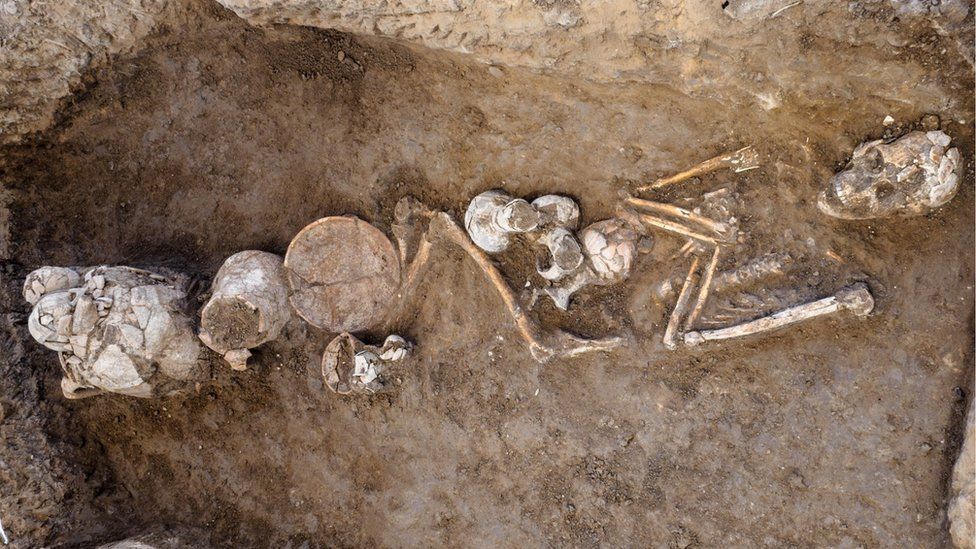ARTICLE AD BOX
By Raffi Berg
BBC News
 Image source, Assaf Peretz, IAA
Image source, Assaf Peretz, IAA
The opium was found in jugs in Canaanite graves
Evidence of the earliest use of the narcotic opium has been found in an ancient burial site in Israel.
Traces were discovered by archaeologists in pottery vessels at the complex in Yehud, about 11km (7 miles) south-east of Tel Aviv.
They say the containers date back about 3,400 years, apparently having been used in local burial rituals.
The site was used by inhabitants during the period when the land was known as Canaan.
The vessels had been unearthed in 2012 when the site was excavated by the Israel Antiquities Authority (IAA), but the latest findings are the result of a new study by the IAA, Tel Aviv University and The Weizmann Institute of Science.
It is believed the opium was grown in what is modern-day Turkey and brought to Yehud via Cyprus. The receptacles themselves were made in Cyprus, the report says. Described as Base-Ring juglets, they were part of a number of pottery vessels thought to have been given to accompany the dead into the afterlife.
They are shaped like inverted closed poppy flowers, which had long ago given rise to the hypothesis that such vessels were used in rituals for the drug. The discovery at Tel Yehud marks the first time actual traces have been found in this type of jug.
"It may be that during these ceremonies, conducted by family members or by a priest on their behalf, participants attempted to raise the spirits of their dead relatives in order to express a request, and would enter an ecstatic state by using opium," said Dr Ron Beeri of the IAA.
"Alternatively, it is possible that the opium, which was placed next to the body, was intended to help the person's spirit rise from the grave in preparation for the meeting with their relatives in the next life."
Two years ago, researchers identified as cannabis a substance found in a 2,700-year-old temple in Tel Arad in south-east Israel. They said it might have been used in religious rituals by ancient Israelites.

 2 years ago
34
2 years ago
34








 English (US) ·
English (US) ·